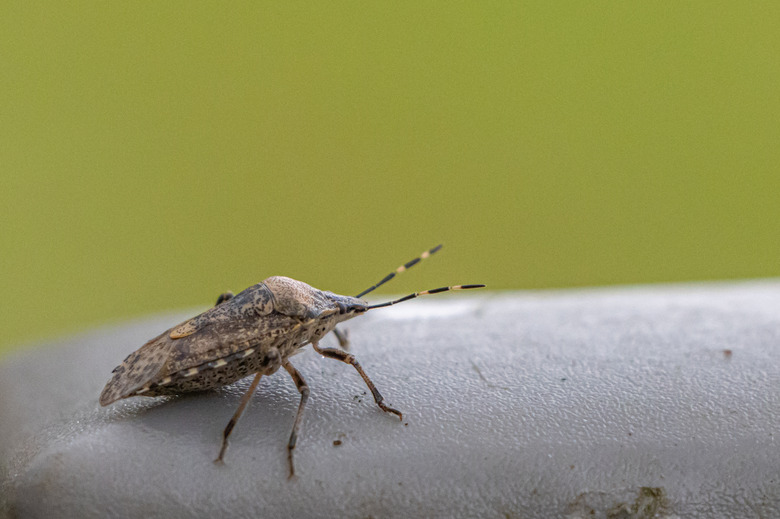What Carbohydrates Make Up The Exoskeleton Of An Insect?
Arthropods (insects and crustaceans) are known for their hard outside covering, or exoskeleton. The exoskeleton allows for joint movement while it covers up soft tissues inside an arthropod's body.
The main structural material in some external skeletons is a complex carbohydrate called chitin.
What Is Chitin?
What Is Chitin?
Chitin is an organic compound that was discovered by Henri Braconnot, a chemist, in 1811. It gets its name from the Greek word chiton, which was the word for "mail" (as in "armor"). It is present in exoskeleton animals such as insects and crustaceans, but also in fungi cell walls. Chitin provides a frame structure for these animals to protect their internal organs and muscles.
Chitin is a complex carbohydrate, the most prevalent aminopolysaccharide polymer in nature. It is second only to cellulose as the most abundant polysaccharide on Earth. Its structure is quite similar to cellulose, but it has different glucose monomer units.
The chemical name for chitin is poly (β-(1-4)-N-acetyl-D-glucosamine. Chitin can be converted to the derivative called chitosan using enzymes or deacetylation. Chitosan is more water-soluble than chitin, and it is often used in bandages, seed coatings and in winemaking.
Chitin is a transparent, flexible material, and in some organisms such as crustaceans, it can be combined with calcium carbonate to make it even stronger. Chitin can be degraded in nature by bacteria.
The Advantages of Chitin for Exoskeleton Animals
The Advantages of Chitin for Exoskeleton Animals
Chitin provides the main structural material in some external skeletons. This framework is rigid and covers the soft tissues underneath. It also provides muscles with a material to pull.
The protective shell of chitin gives exoskeleton animals an advantage because it works as a kind of armor. Exoskeletons are made of joints that allow better leverage for animals to move their limbs.
This better leverage makes the animals stronger relative to their size than animals without an outer frame architecture of chitin. Chitin can also be found in the mandibles of some organisms, such as snails.
The Disadvantages of Chitin for Exoskeleton Animals
The Disadvantages of Chitin for Exoskeleton Animals
With increasing size, a chitin exoskeleton would become impractical for an animal, making it too heavy to move around. This is why arthropods tend to be tiny in comparison to large vertebrates.
Another distinct disadvantage happens when exoskeleton animals shed or molt their chitin shell as they grow. There can be as many as six molts between the hatching of an insect and when it becomes an adult.
When this occurs, breathing is impeded because the animal's tracheole lining comes out along with its exoskeleton. This puts insects at risk, and the situation worsens with increased temperatures.
Novel Uses for Chitin
Novel Uses for Chitin
In addition to being the main structural material in some external skeletons, chitin has proven to be useful in numerous manmade materials. Nanotechnology has used chitin and chitosan to make polymer scaffolds.
Chitin and chitin-based compounds have also been used for biomedical applications. The frame structure that chitin and chitosan provide make it invaluable for making composite scaffolds for wound healing and blood-clotting. This is due to the crystalline microfibrils within chitin that make it so stable for exoskeletons and the cell walls of fungi.
Chitin-based compounds are also used for drug delivery, biological recognition ligands for cancer diagnosis, ophthalmology, vaccine adjuvants and fighting tumors.
Chitin and chitosan are nontoxic, biocompatible, microbial and biodegradable. They have great structural integrity, are highly porous and can degrade at a predictable rate. Solvents can extract chitin from crustacean shells for use in other materials.
Emerging Technology
Emerging Technology
The second most abundant carbohydrate on Earth provides structure and function to organisms in the natural world, as well as modern technology.
Future advancements based on the stability and flexibility of chitin should provide agriculture, biotechnology, nanomedicine and other fields with a powerful component to aid humanity.
References
- Science Magazine: Insect Molting Is 'Like Having Your Lungs Ripped Out'
- Fulton-Montgomery Community College: An Online Introduction to the Biology of Animals and Plants: Arthropods
- Chemistry World Podcast: Chitin
- International Journal of Advanced Research: Chitin and Chitosan: Production and Application of Versatile Biomedical Nanomaterials
Cite This Article
MLA
Hermance, Dianne. "What Carbohydrates Make Up The Exoskeleton Of An Insect?" sciencing.com, https://www.sciencing.com/carbohydrates-make-up-exoskeleton-insect-8128220/. 22 November 2019.
APA
Hermance, Dianne. (2019, November 22). What Carbohydrates Make Up The Exoskeleton Of An Insect?. sciencing.com. Retrieved from https://www.sciencing.com/carbohydrates-make-up-exoskeleton-insect-8128220/
Chicago
Hermance, Dianne. What Carbohydrates Make Up The Exoskeleton Of An Insect? last modified March 24, 2022. https://www.sciencing.com/carbohydrates-make-up-exoskeleton-insect-8128220/
